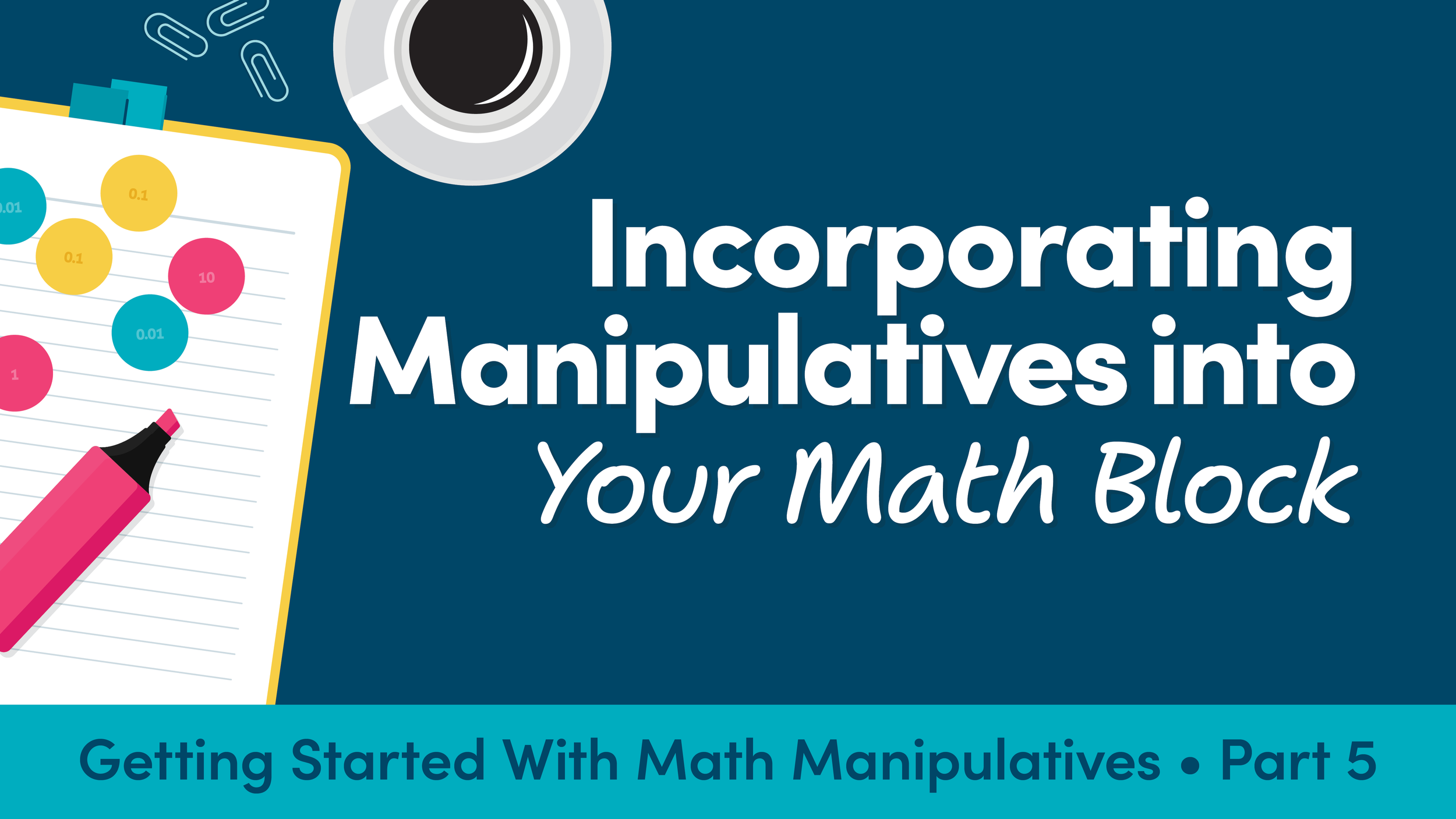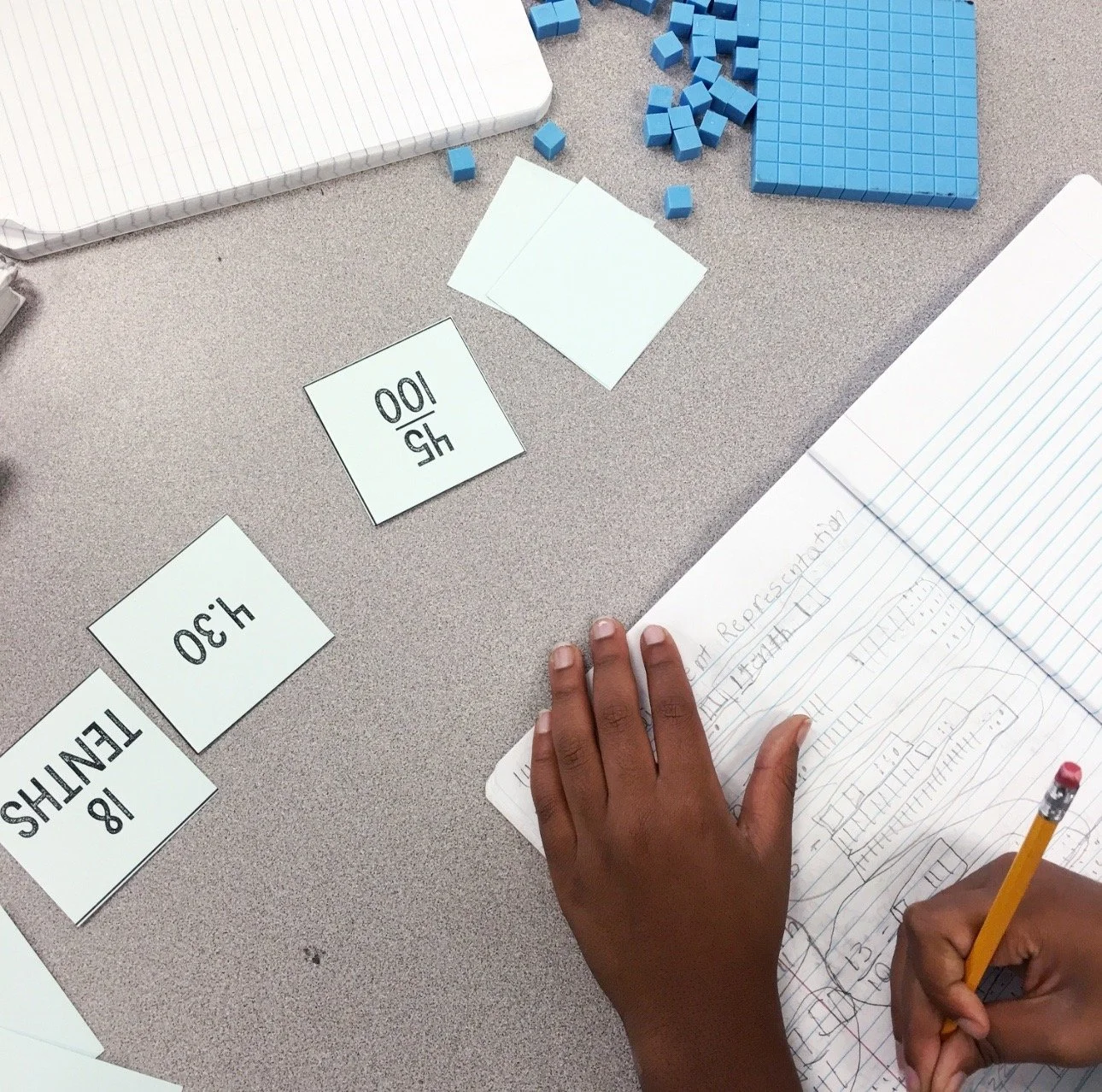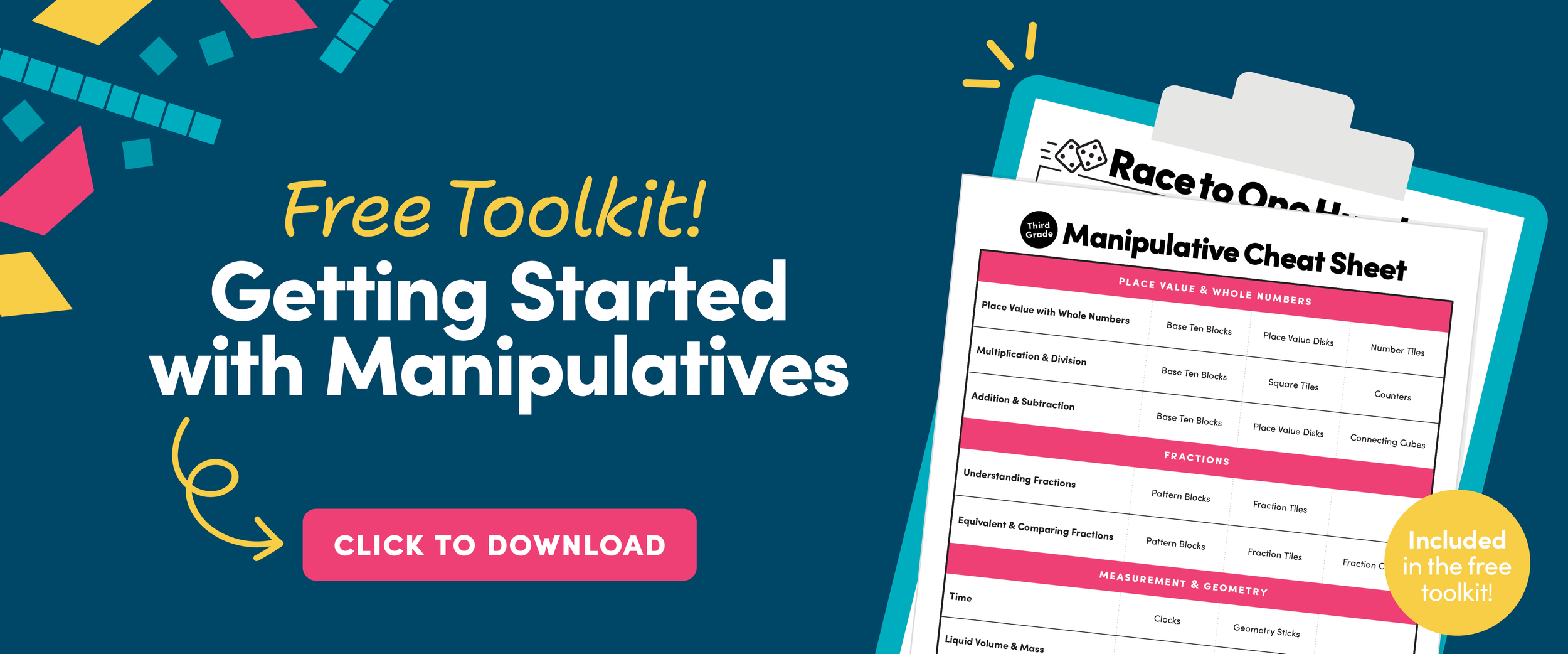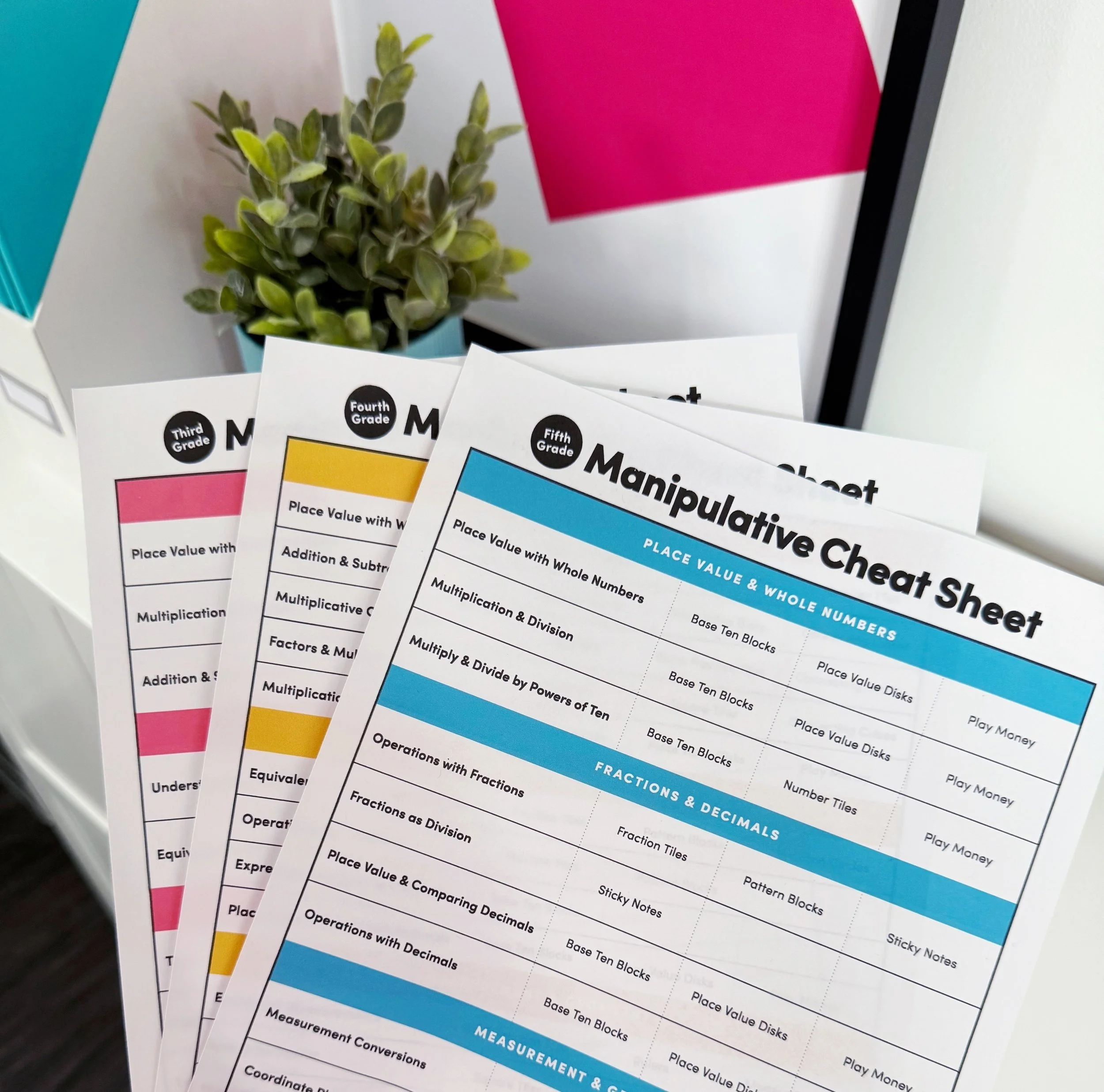Incorporating Math Manipulatives Into Your Math Block
Welcome to the Getting Started With Math Manipulatives series! I created this series to share tips and ideas to help you break through the biggest roadblocks that may be holding you back from using math manipulatives in your upper elementary classroom.
Did you miss Part 4 of the series? Click here to read about Planning Hands-On Lessons with Math Manipulatives.
We're nearing the end of our math manipulatives series and while I'm bummed it's wrapping up, I’m so excited for you to read Part 5 because it gives you a peek inside how I've used math manipulatives in my classroom.
Let's start with a few ways I organized my math block around using manipulatives.
How I Incorporated Manipulatives into My Math Block
Teacher-Led Small Group
Whenever I pulled a small group of students to work with me, you can bet the manipulatives were out! Many teachers are most comfortable starting here with manipulatives because it's less to manage overall.
This time is valuable since you get insight into individual students' thinking, but we can't stop there. If students only use manipulatives in a teacher-led small group, we limit their hands-on learning opportunities!
Concurrent Small Groups
This is how I most frequently used math manipulatives in my classroom. I would introduce a task to the whole class, and then all students would work on that same task at the same time in small groups. This is often called concurrent small groups because every group is working simultaneously, not rotating or doing different activities.
We would often slide in and out of small group exploration and whole group discussion to give students a chance to share what they were noticing with the manipulatives. During this time, I'd move between groups, joining discussions and offering support, as needed. The manipulative management tips we talked about in a previous email were crucial for keeping these transitions smooth and efficient!
Partner Gallery Walks
This is a student favorite! I placed problems and containers of manipulatives at different tables around the room. Partner groups then rotated to work on each problem, documenting their work with manipulatives in their math journals.
An alternative to this (which is why I call it a gallery walk) is to have partner groups work through a problem with manipulatives and document their work on a whiteboard. Then, groups switch tables to view the other group's work and later meet up to ask questions and provide feedback.
It's a simple activity that gets students out of their seats and allows them to collaborate with other students as they learn. That's a win-win in my eyes!
Class Starters (and Time-Fillers!)
As soon as students stepped foot in my classroom, I wanted their brains working and I wanted them to have a little fun too. It's important to me that students fall in love with math!
Some days I planned quick, simple games that students could play with their table groups as soon as they entered the classroom. Their tables were prepped with manipulatives, the directions for the game were on the board, and a timer was set!
We could play the same game over and over again for many days, and students never complained! In fact, I've never seen them rush to math class so quickly 😉 They truly loved working with manipulatives in this way!
You can find two of my favorite games in the FREE Getting Started With Math Manipulatives Toolkit!
Although these are some of my favorite ways to use manipulatives in my math block, please know that with purposeful organization and solid routines in place (which you now have 🙌), you can use manipulatives any time in your math block! There's no wrong time to bring out manipulatives!
Knowing Which Manipulatives to Use with Different Math Concepts
Now that you've seen how I used manipulatives throughout my math block, let's talk about something just as important-choosing the right manipulatives for each math concept.
To make this a little easier for you, I created a Math Manipulative Cheat Sheet, which is a quick guide that lists the manipulatives I've found to be the most helpful to develop a deep understanding of each math concept.
It is the perfect complement to the Math Manipulative Planning Map I shared with you in Part 4. Print and keep it on your desk to reference all year long as you plan to incorporate manipulatives into your math instruction!
Just like the rest of the freebies I’ve shared with you in this series, you can find the Math Manipulative Cheat Sheet in the FREE Getting Started With Math Manipulatives Toolkit!
This tool is a great starting point! And really, that's what this entire series has been about: helping you overcome the most common struggles you may be facing when using math manipulatives.
But can I tell you something, math friend? I have so much more to share with you!
I created the Make Math Hands-On workshop to share the exact shifts that helped me go from frustrated to confident when using math manipulatives in my upper elementary classroom. In the workshop, you'll learn:
The #1 mistake we all make with manipulatives (and how to fix it)
How to use them in a way that actually deepens understanding
A framework for using manipulatives with any concept in your curriculum
If that sounds helpful, I’d love to have you join us! It's completely FREE, and you'll walk away with ideas you can use immediately. You'll also receive 24 FREE math manipulative task cards and a certificate of completion for 1.5 hours! Click below to save your spot in an upcoming workshop!
We've had 10,000+ teachers attend a session of the workshop, and here's what just a few of them have said…
“This workshop has made me excited for the first time about teaching math!” – Amber
“I am beyond inspired. This is definitely my favorite PD I have ever attended.” – Alex
“Can’t believe this was 90 minutes! It felt like 30! Time flies when you’re having fun!” -Stephanie
I know how difficult it is to find free time in your calendar, but I promise this workshop is worth it. Save your spot at one of our upcoming sessions, and I’ll make sure it’s time well spent 💛
Don’t miss the rest of the Getting Started With Math Manipulatives in Upper Elementary Series






